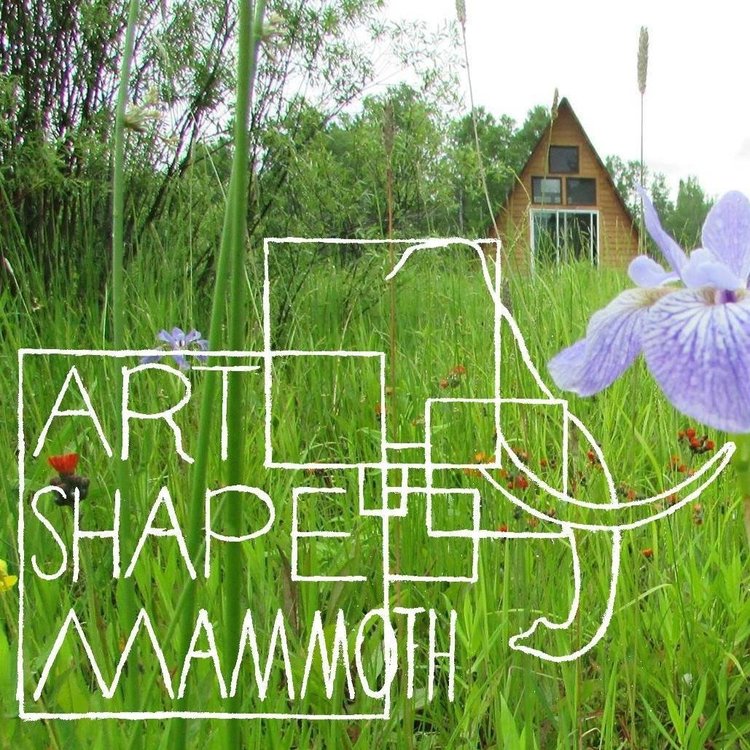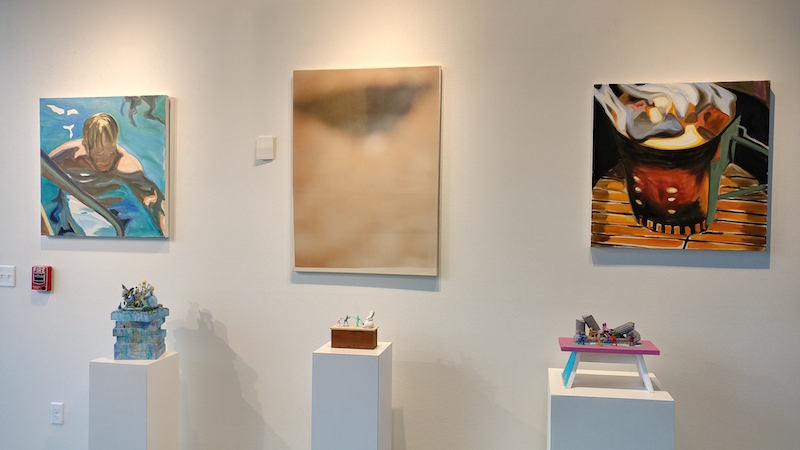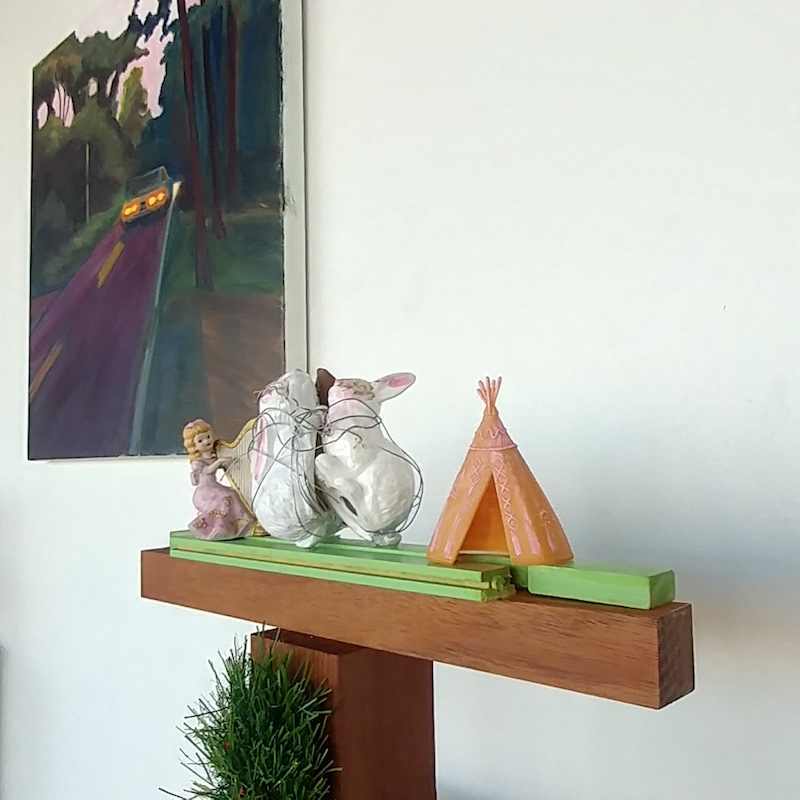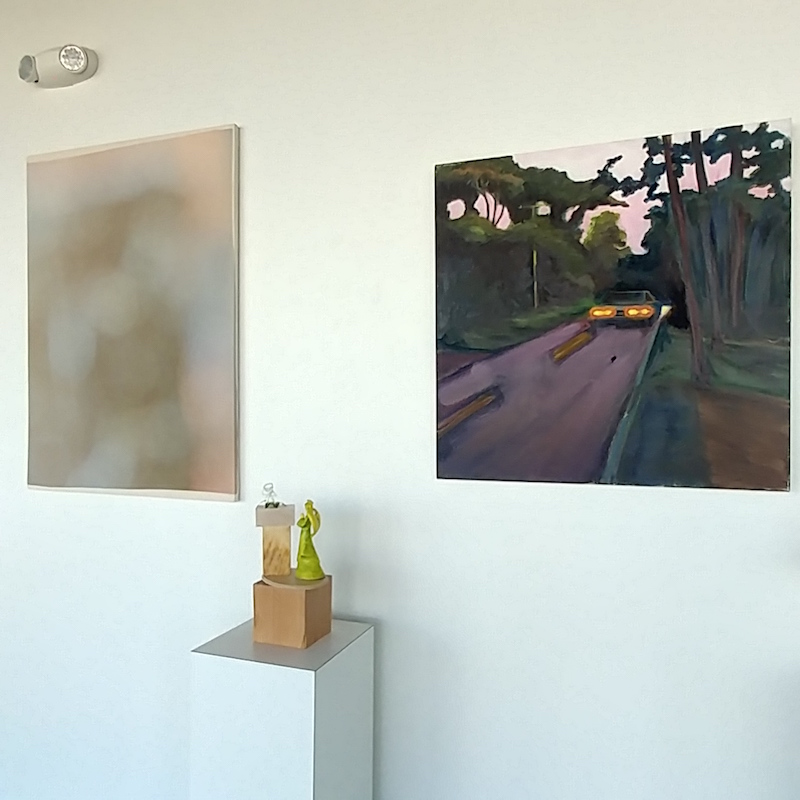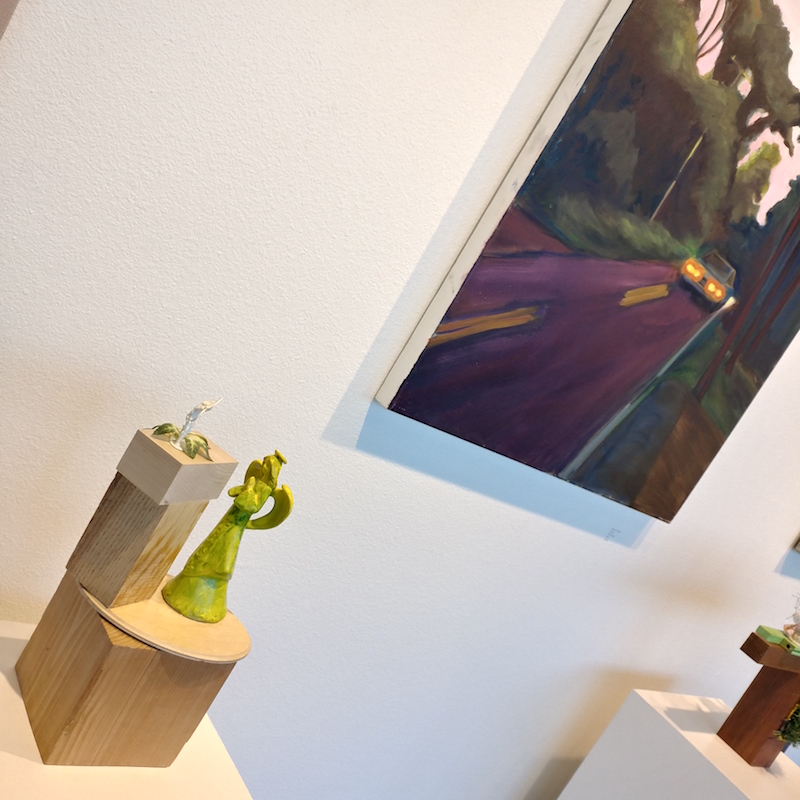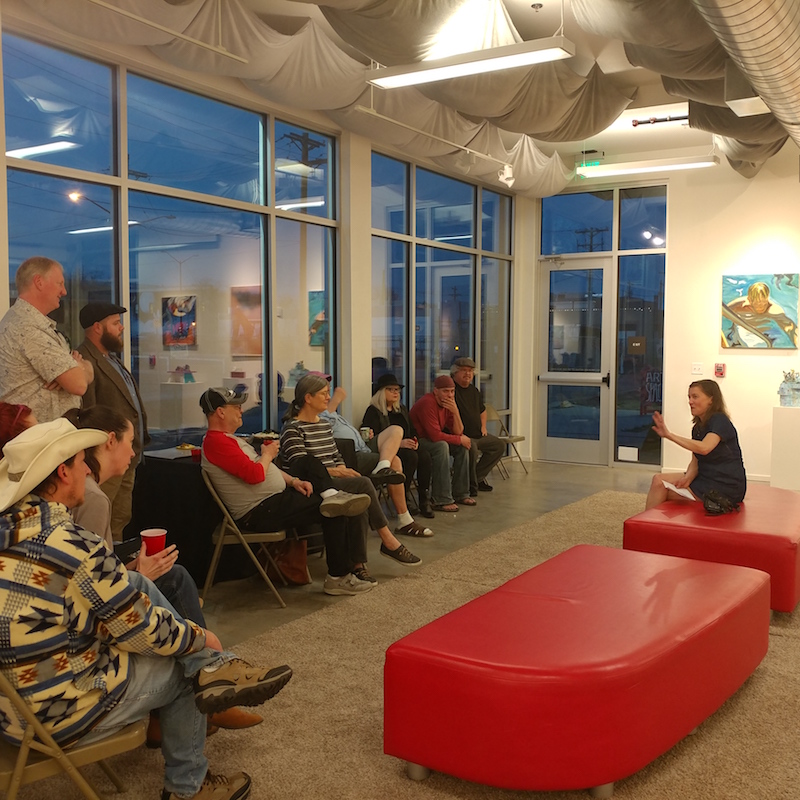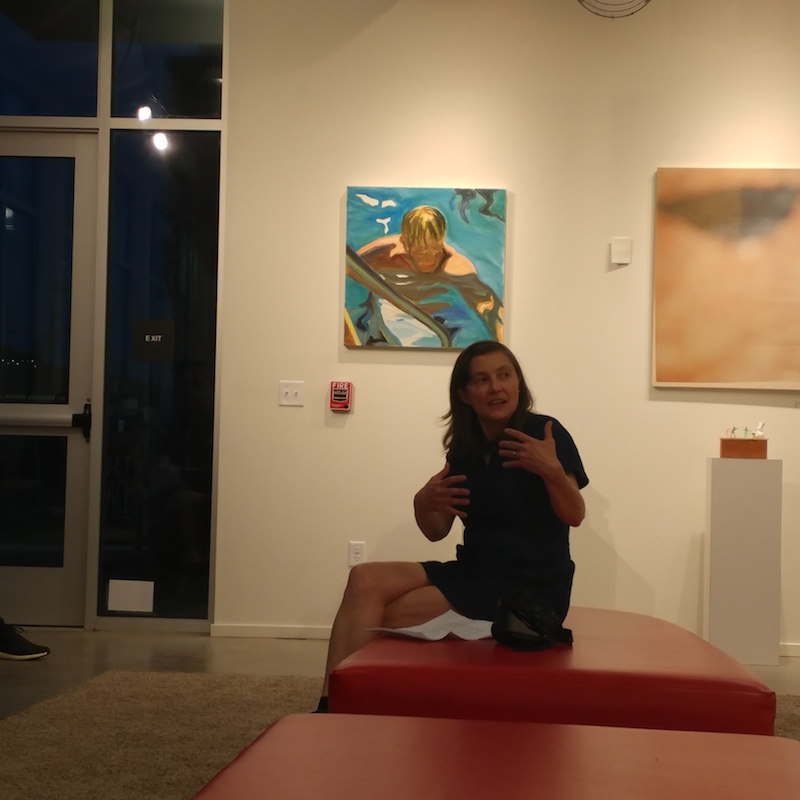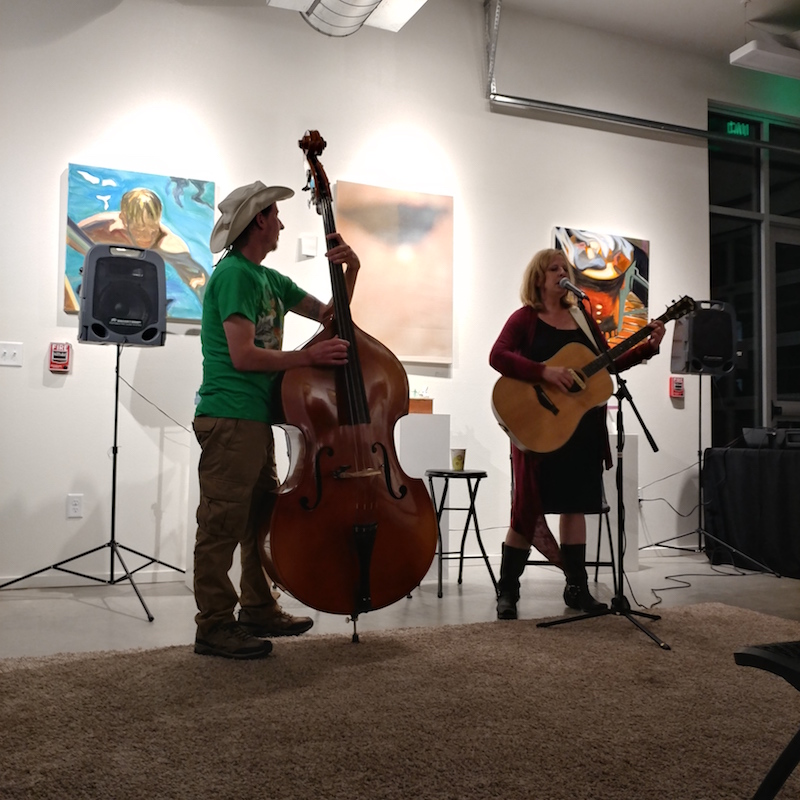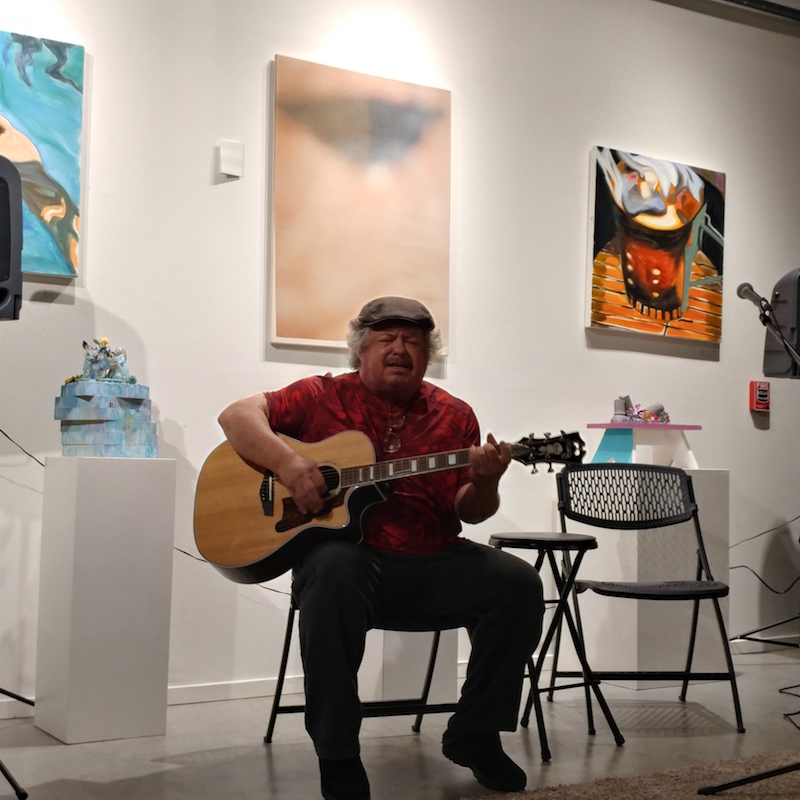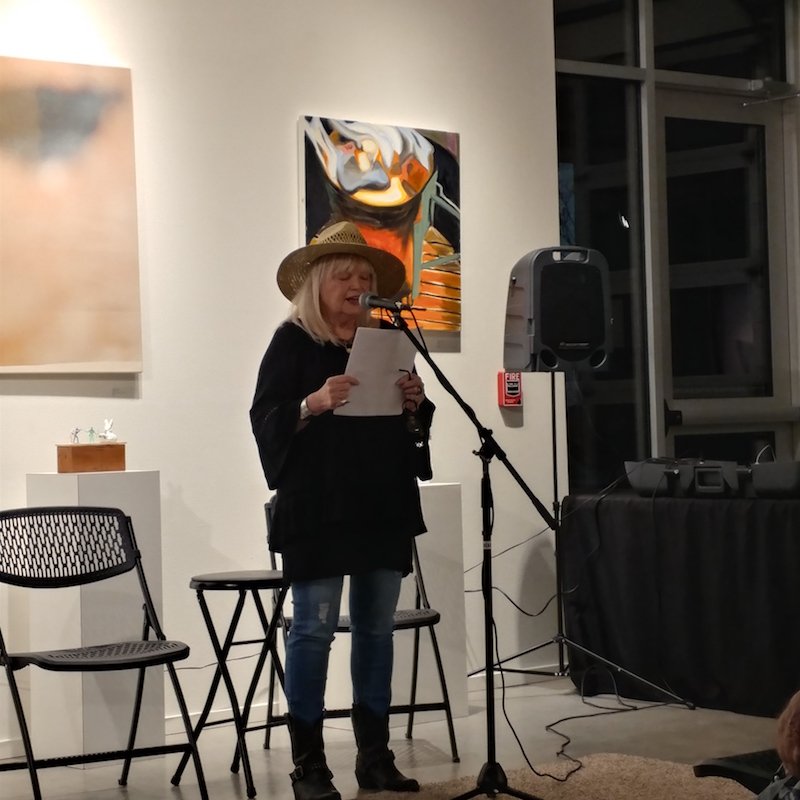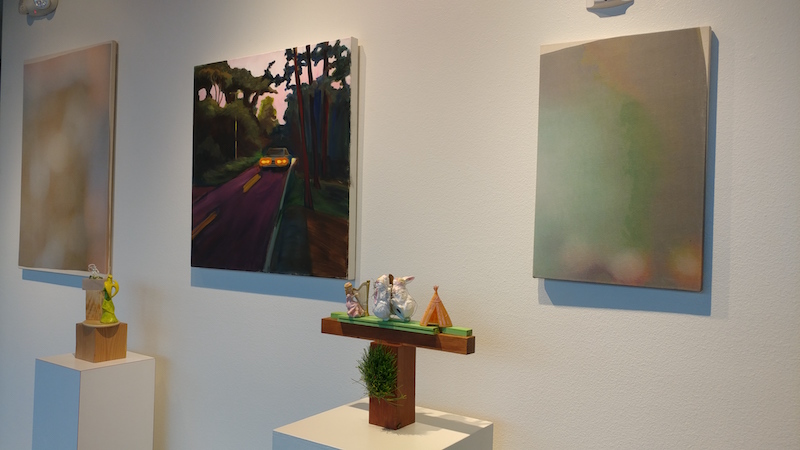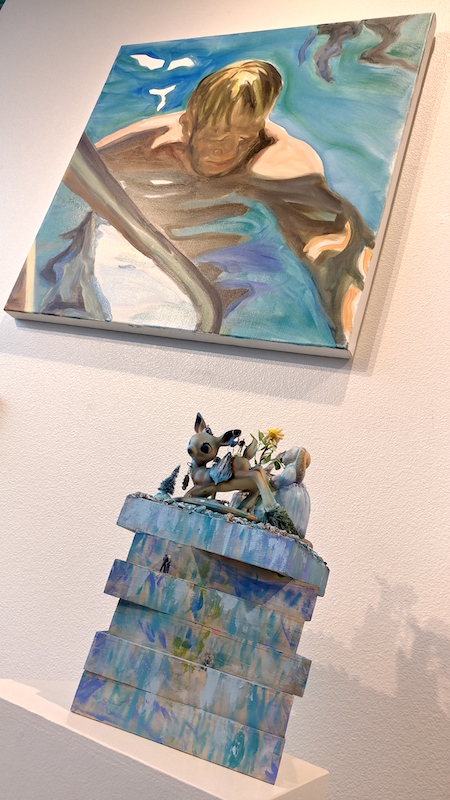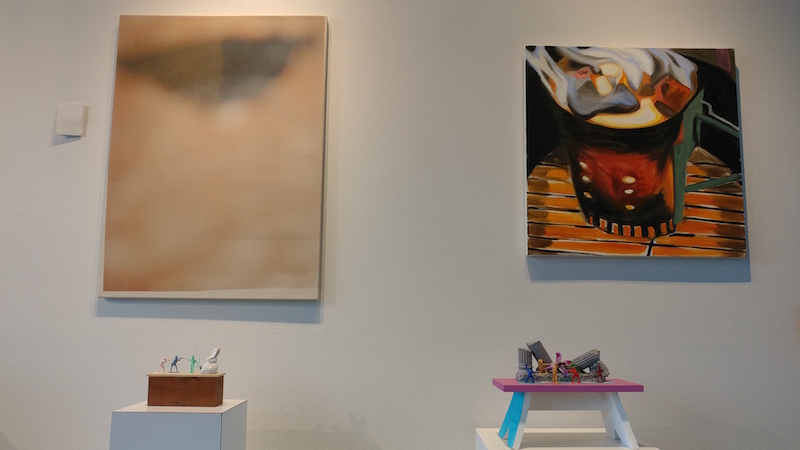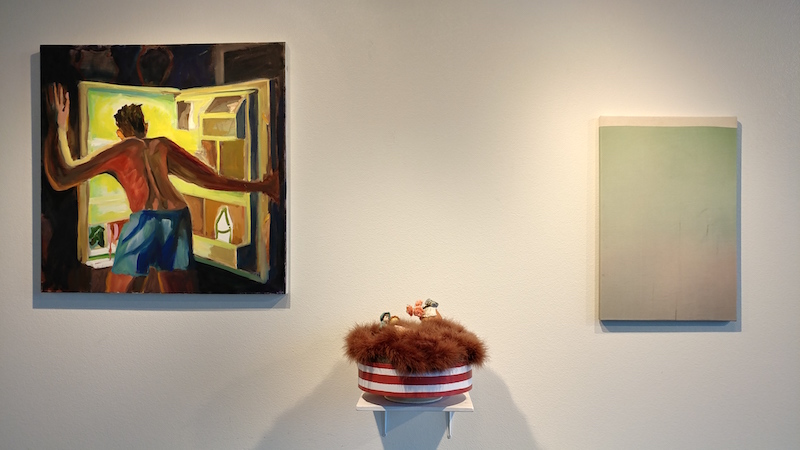Language of Perception
Loveland ArtSpace Gallery, Loveland, CO
140 W 3rd St, Loveland, CO, April 22nd - May 6th, 2018
Opening Reception April 27th 5pm-8pm, with Artist Talk by Maureen O'Leary at 7pm
Curated by Amy Joy Hosterman
Language of Perception is an exhibition featuring work by Rita Bard, Douglas Degges, and Maureen O’Leary, exploring our perceptions of value, and the effects our emotions and memories have on these perceptions, as they pertain to lived experiences as well as the making of the art which interprets those experiences. Through sculpture, painting, and digital mark-making, these artists present intriguing narratives as they dive into their personal experiences with humor, curiosity, and a rare ability to step back and observe the idiosyncrasies of their perceptions.
Rita Bard, Waltzing Matilda, detail, mixed media sculpture
Rita Bard creates mixed-media sculptures that blend traditionally-recognized art media with “lowbrow” techniques of creation and the use of ready made objects. Growing up between Germany and the United States, she recalls a diverse mix of influences in visual culture, and the early realization that perceptions can vary widely from reality. In the same way that she saw the castles at Disneyland to be just as real as the historic castles on the Rhine River, she sees a single hair to be as pleasing as a delicate line drawn in graphite, or a colorful cereal box to be as engaging as an oil painting.
Bard’s sculptures are lively, satirical, ambiguous scenes created from this wide range of media and technique. Developing ideas from memory, history, imagination, and contemporary culture and politics, she considers this era of postmodernism through a visual “language of discovery,” studying the relationship between physical reality and emotional interpretation. What might we discover in this place?
Douglas Degges, Untitled, printed pigment on stretched canvas
Douglas Degges creates paintings about paintings, experimenting with the relationship between the image itself and the physical object that supports that image. Before painting the surface image with oils, he applies a textured plaster base layer to his canvases to give the appearance of a heavily layered and labored-over painting. Yet the overlying surface image disregards the underlying texture, highlighting the tension between the image and the object.
In his series, Pictures from Props, Degges takes this idea a step farther. The oil painting is photographed using technically-poor lighting, impulsive framing, and indiscernible focus, and is imperfectly printed onto a raw, flat canvas, leaving traces of the process in the finished image. This highly abstracted image, unreadable as its original self, is open for an entirely new interpretation from each viewer. The physically layered surface is haphazardly manipulated into one layered in the narrative of its creation and evolution. At the same time self-deprecating and celebratory, Degges’ work provokes questions about our perceptions of the value in material and invested labor, and our relationship to the painted image in this increasingly visual culture.
Maureen O'Leary, Untitled, oil on linen
Maureen O’Leary is a painter who was transplanted from the city to the suburbs of New York, leading her to observations of sociocultural behaviors, and the peculiar ways in which we seek to structure and constrain our environments. In this series, American Vernacular, O’Leary paints relaxed snapshots of suburban life and leisure. These casual, subtle scenes together create a narrative that examines the eccentricities of ordinary moments and mundane pastimes, investigating the contradiction between suburban ideals of safety and stability, and the realities of isolation and blandness.
Relaxation amongst the noise of appliances, and attempts to beat back the wildness of nature while tending to tidy gardens and using fire recreationally within a “safe” suburban bubble illustrates, as O’Leary puts it, a “ceremony of swapping danger for dullness.” Her work appreciates the humor found in the habitual with awkward charm, and highlights shifting perceptions between monotonous uniformity and a new language of self-expression.
